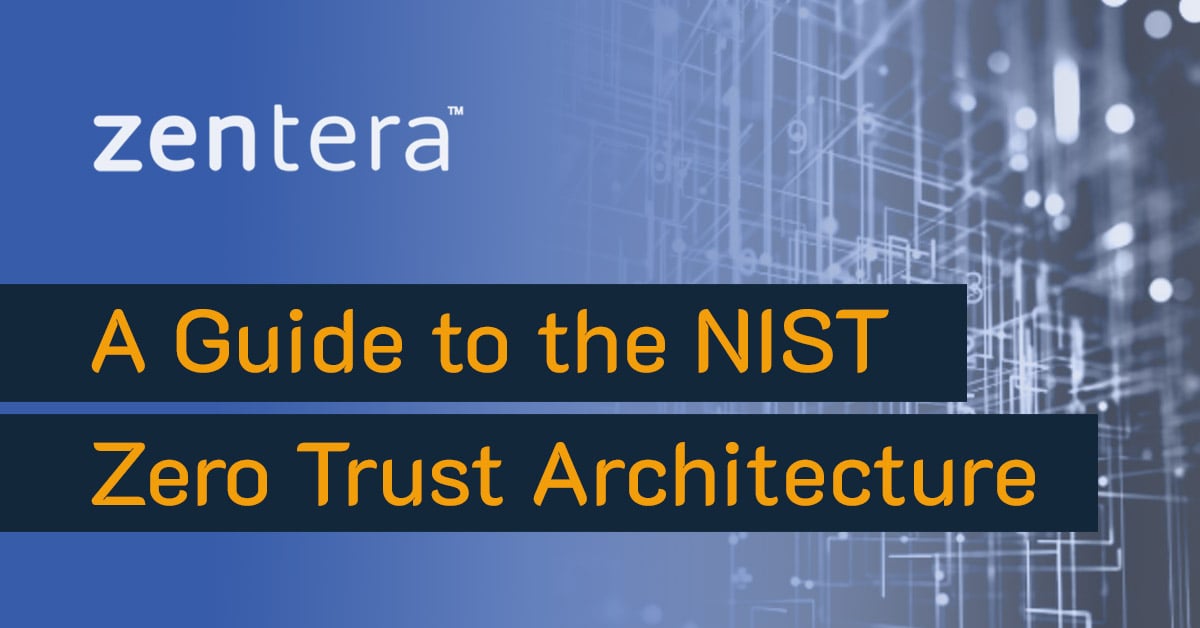CMMC Compliance Accelerated: How Zero Trust Architecture Delivers Faster Results

 The Cybersecurity Maturity Model Certification (CMMC) has fundamentally changed the cybersecurity landscape for defense contractors. With CMMC Level 2 requirements being phased into DoD contracts starting in 2025, organizations can no longer rely on traditional "castle and moat" security approaches to protect Controlled Unclassified Information (CUI). Deadlines are rapidly approaching for all organizations in the Defense Industrial Base.
The Cybersecurity Maturity Model Certification (CMMC) has fundamentally changed the cybersecurity landscape for defense contractors. With CMMC Level 2 requirements being phased into DoD contracts starting in 2025, organizations can no longer rely on traditional "castle and moat" security approaches to protect Controlled Unclassified Information (CUI). Deadlines are rapidly approaching for all organizations in the Defense Industrial Base.
The solution? Zero Trust Architecture – a security framework that treats every access request as potentially hostile, regardless of where it originates. For defense contractors racing against CMMC deadlines, Zero Trust isn't just a modern security approach; it's the fastest path to compliance.
Why CMMC Introduces New Security Requirements
Most defense contractors built their networks around perimeter security – firewalls protecting the "inside" from the "outside." The cybersecurity industry relied on this standard approach for years, but recent developments have exposed its limitations. Threat actors like Volt Typhoon routinely bypass firewall protections by leveraging stolen credentials, exploiting vulnerabilities, or deploying social engineering tactics.
CMMC Level 2's 110 security practices are intended to plug several critical gaps in perimeter-based security:
The Lateral Movement Problem
Traditional networks operate on implicit trust: once you're inside the perimeter, you can move freely. But CMMC requires that every access to CUI be authenticated and logged. Simply putting CUI servers in a separate subnet isn't enough if attackers can move laterally once they breach the perimeter.
Remote Access Limitations
Legacy VPNs typically grant broad network access once connected, violating CMMC's principle of least privilege. When an engineer accesses a CAD environment, automatically gaining access to HR systems or financial data shouldn't be a side-effect.
Collaboration Challenges
Modern defense projects require secure collaboration with subcontractors and partners. Traditional approaches either block this collaboration entirely or create risky workarounds that violate CMMC requirements.
Audit and Monitoring Gaps
CMMC demands comprehensive audit trails and continuous monitoring. Traditional networks often lack visibility into internal communications, making it impossible to demonstrate compliance with Audit & Accountability requirements.
Understanding CMMC Assessment Types
CMMC Level 2 contractors fall into two categories based on the sensitivity of their contracts:
- Self-Assessment (approximately 9,510 entities): Organizations handling lower-risk CUI conduct their own assessments with annual affirmations. While this represents a smaller portion of the Defense Industrial Base, it provides a pathway for certain contractors to demonstrate compliance efficiently.
- C3PAO Certification (approximately 182,105 entities): The vast majority of contractors handling CUI will require third-party assessments by CMMC Third-Party Assessment Organizations (C3PAOs) every three years. This independent verification provides DoD with confidence in contractor cybersecurity postures.
The determination of which assessment type applies will be specified in each DoD contract solicitation. Program Managers evaluate factors including the criticality of the program, sensitivity of information, and threat landscape when making this determination.
CMMC Conditional vs. Final Status:
A Pragmatic Approach
Organizations don't need perfect scores to win contracts. CMMC Level 2 allows contractors to achieve eligibility through a conditional status:
- Minimum Score: 88 points out of 110 (80% threshold)
- Plan of Action & Milestones (POA&M): Certain requirements can be placed on a remediation plan
- Remediation Window: 180 days to close all POA&M items and achieve Final status
- Critical Requirements: Some security controls cannot be placed on POA&Ms and must be met immediately
This pragmatic approach recognizes that cybersecurity is a journey. Contractors can compete for contracts with a Conditional CMMC Status while working systematically toward full compliance. However, all POA&M items must be remediated within 180 days, or the Conditional status expires and standard contractual remedies apply.
How Zero Trust Principles Align with CMMC Domains
Zero Trust Architecture wasn't designed specifically for CMMC, but its principles directly address the framework's core requirements across multiple domains:
Access Control (AC)
Zero Trust enforces least privilege access by default. Every user, device, and application must be explicitly authorized before accessing any resource. This directly satisfies CMMC controls like:
- AC.1.001: Limit information system access to authorized users
- AC.2.016: Control remote access sessions
- AC.3.018: Separate duties of individuals
Identification & Authentication (IA)
Zero Trust requires strong identity verification for every access attempt, typically including multi-factor authentication (MFA). This covers requirements such as:
- IA.2.078: Multi-factor authentication for local and network access to privileged accounts
- IA.2.081: Multi-factor authentication for local and network access to non-privileged accounts
System & Communications Protection (SC)
By encrypting all communications and controlling network boundaries, Zero Trust addresses:
- SC.2.179: Control communications at system boundaries
- SC.3.177: Use approved cryptography when protecting CUI
- SC.3.191: Protect the confidentiality of CUI at rest
Audit & Accountability (AU)
True Zero Trust architectures provide comprehensive logging and monitoring capabilities:
- AU.2.041: Generate audit records for security-relevant events
- AU.3.048: Protect audit logs from unauthorized access
- AU.3.051: Correlate audit record review and analysis
The Zero Trust Advantage:
Speed to CMMC Compliance
 Implementing Zero Trust Architecture offers defense contractors several advantages over traditional compliance approaches:
Implementing Zero Trust Architecture offers defense contractors several advantages over traditional compliance approaches:
- Software-Defined Security
Unlike hardware-based solutions that require network redesigns, Zero Trust can be implemented through software overlays on existing infrastructure. This means:
- No IP address changes or network reconfiguration
- Minimal downtime during deployment
- Rapid scalability as needs change
- Policy-Based Control
Zero Trust uses identity-based policies rather than network-based rules. This allows organizations to:
- Define access controls in business terms (roles, projects, departments)
- Implement consistent policies across hybrid and multi-cloud environments
- Adapt quickly to organizational changes
- Integrated Compliance
A well-designed Zero Trust platform addresses multiple CMMC domains simultaneously, reducing the complexity of managing disparate security tools.
Real-World Implementation:
The Virtual Chambers Approach
Consider how a defense contractor might implement Zero Trust for CMMC compliance using Virtual Chambers - logical security boundaries that protect sensitive assets:
Step 1: Asset Identification
Identify all systems that handle CUI (servers, workstations, databases) and group them into logical chambers based on projects or sensitivity levels.
Step 2: Policy Definition
Create identity-based access policies such as:
- "Engineering team members can access Project Alpha chamber via RDP from corporate devices with current patches"
- "External consultants can access shared project data through secure file transfer only"
Step 3: Enforcement
Deploy lightweight agents on endpoints to enforce policies at the source and destination, ensuring that unauthorized access attempts are blocked by default.
Step 4: Monitoring
Implement continuous monitoring to track all access attempts, successful connections, and policy violations – creating the audit trail required for CMMC assessments.
How Virtual Chambers Address CMMC Requirements Specifically
Zentera's Virtual Chambers approach directly maps to CMMC's technical requirements:
- Access Control (AC): Least-privilege access enforced by default through identity-based policies that verify every user, device, and process
- Identification & Authentication (IA): MFA integration and device verification for every access attempt, with continuous posture monitoring
- System & Communications Protection (SC): Encrypted communications and microsegmentation within chambers, with default-deny architecture
- Audit & Accountability (AU): Comprehensive logging of all access attempts and policy violations, with centralized visibility
- Configuration Management (CM): Centrally managed security policies that can be versioned, updated, and consistently applied
- Media Protection (MP): Controlled file transfer with optional content scanning, reducing reliance on removable media
- System & Information Integrity (SI): Continuous device posture checks and immediate quarantine capabilities for compromised systems
By implementing Virtual Chambers, contractors address multiple CMMC domains simultaneously, accelerating the path to both Conditional and Final CMMC Status. This integrated approach eliminates the complexity of managing multiple point solutions while providing the comprehensive security controls CMMC demands.
Beyond Compliance:
Strategic Benefits of Zero Trust
While achieving CMMC compliance is often the immediate driver, Zero Trust Architecture provides long-term strategic advantages:
Future-Proof Security
As cyber threats evolve and regulations change, Zero Trust's adaptable framework ensures continued protection without major infrastructure overhauls.
Competitive Advantage
Early adoption of Zero Trust positions contractors as security leaders, potentially opening doors to higher-level classified work and premium contracts.
Operational Efficiency
By eliminating the complexity of managing multiple security tools and network zones, Zero Trust can reduce operational overhead and improve user productivity.
Getting Started with Zero Trust for CMMC Compliance
The journey to Zero Trust-based CMMC compliance doesn't have to be overwhelming. Here's a practical approach:
Phase 1: Assessment and Planning
- Inventory CUI assets and current security controls
- Identify gaps against CMMC requirements
- Design Zero Trust architecture for your environment
Phase 2: Pilot Implementation
- Start with a small, contained environment
- Implement Virtual Chambers for critical CUI systems
- Test access policies and monitoring capabilities
Phase 3: Full Deployment
- Roll out Zero Trust controls across the organization
- Integrate with existing identity providers and security tools
- Document policies and procedures for CMMC assessment
Phase 4: Continuous Improvement
- Monitor and refine policies based on operational needs
- Prepare documentation for CMMC assessment
- Expand Zero Trust principles to additional systems and users
The Bottom Line:
Zero Trust as a CMMC Compliance Accelerator
CMMC compliance is no longer a checkbox – it’s a go/no-go gate for doing business with the DoD. Traditional security approaches that worked in the past simply cannot meet the sophisticated requirements of CMMC Level 2 and beyond.
Zero Trust Architecture offers a proven path to faster compliance by:
- Addressing multiple CMMC domains with integrated controls
- Providing coverage across entire environments: on-premises, cloud, and OT/factory
- Enabling rapid deployment without infrastructure overhaul
- Providing the audit trails and monitoring required for assessment
- Supporting secure collaboration with partners and subcontractors
The question isn't whether your organization will need to implement Zero Trust for CMMC compliance – it's whether you'll get ahead of the curve or scramble to catch up as deadlines approach.
Ready to Accelerate Your CMMC Compliance Journey?
Implementing Zero Trust Architecture for CMMC compliance requires the right strategy, tools, and expertise. Zentera's Virtual Chambers provide a comprehensive solution that transforms existing IT infrastructure into a CMMC-compliant environment in days, not months.
Take the Next Step Toward CMMC Compliance
Zentera's Virtual Chambers solution has helped defense contractors achieve CMMC Level 2 compliance in weeks, not months:
- Download our comprehensive whitepaper: "Virtual Chambers for Rapid CMMC Compliance" to see the detailed technical approach and implementation roadmap
- Schedule a personalized CMMC readiness consultation: Contact our team at sales@zentera.net to discuss your specific requirements and timeline
- Request a demonstration: See how Virtual Chambers address your CMMC assessment scope and security requirements
Don't wait until contract deadlines force rushed implementation. Start your CMMC compliance journey today with a proven Zero Trust solution designed specifically for the Defense Industrial Base.
CMMC Compliance FAQs
If I'm already ISO 27001 or NIST 800-171 compliant, how does CMMC help me?
If you've already implemented NIST SP 800-171 Rev 2 requirements, you're well-positioned for CMMC Level 2. However, CMMC adds verification through independent assessment:
- CMMC Level 2 (Self-Assessment): Document your existing compliance with the same 110 controls, with results entered in SPRS
- CMMC Level 2 (C3PAO Assessment): Third-party verification provides competitive advantage and is required for most CUI-handling contracts
- Ongoing compliance: Annual affirmations and three-year reassessments ensure continuous protection
The key difference: CMMC moves from self-attestation to verified compliance, giving DoD confidence in your security posture. There is no official audit or certification body for NIST 800-171 self-assessments, which is why DoD developed the CMMC program to provide independent verification.
Additionally, many organizations that believe they are NIST 800-171 compliant discover gaps during formal CMMC assessments. The rigorous assessment methodology of CMMC, based on NIST SP 800-171A, provides much deeper verification than typical self-assessments.
What are the effective dates of CMMC 2.0 Level 2?
The CMMC 2.0 Program rule (32 CFR Part 170) became effective on December 16, 2024. However, Phase 1 implementation begins when both the Program rule (32 CFR 170) AND the Acquisition rule (48 CFR 204) are finalized, whichever occurs later.
The DoD will phase in CMMC requirements over approximately three years using a four-phase approach:
- Phase 1: Begins when both rules are effective – applies to new contracts requiring Level 2 self-assessments
- Phase 2: Begins approximately one year after Phase 1 – applies to new contracts requiring Level 2 C3PAO certification assessments
- Phase 3: Begins approximately one year after Phase 2 – expands Level 2 and begins Level 3 requirements
- Phase 4: Full implementation approximately one year after Phase 3 – CMMC requirements apply to all applicable contracts
Note: The DoD may include CMMC requirements in specific contracts before the full phase-in is complete, based on program criticality and other factors.
Exact dates and details may evolve, so contractors should monitor official DoD communications and contract language.
How do the CMMC deadlines affect me and my business?
Here's an overview of how CMMC requirements will be phased in for Level 2 organizations. While these are general guidelines, the DoD may enforce CMMC requirements earlier for specific contracts. Contractors should review their contracts and solicitations for specific compliance dates.
Phase 1: Initial Implementation
- Applicable to: Organizations eligible to perform Level 2 self-assessments (approximately 9,510 entities)
- Requirements: Self-assessment results must be submitted to SPRS to be eligible for contract award
- Impact: Small subset of contractors with lower-risk CUI handling
Phase 2: C3PAO Assessments Begin
- Start: Approximately one year after Phase 1
- Applicable to: New contracts requiring Level 2 C3PAO certification assessments (approximately 182,105 entities – the vast majority)
- Requirements: Obtain Level 2 Certification Assessment by a C3PAO for new contracts
- Impact: Most defense contractors handling CUI will need third-party assessments
Phase 3: Expansion
- Start: Approximately one year after Phase 2
- Applicable to: Continued expansion of Level 2 requirements; Level 3 requirements begin for critical programs
- Requirements: Level 2 and Level 3 assessments as specified in contracts
Phase 4: Full Implementation
- Start: Approximately one year after Phase 3
- Applicable to: All contracts, including new contracts and extensions of existing contracts
- Requirements: Full CMMC compliance required across all applicable DoD contracts
What are the possible consequences for missing compliance deadlines?
Non-compliance with CMMC requirements can result in:
- Contract ineligibility: Cannot be awarded new contracts or exercise contract options without the required CMMC Status
- Contract termination: Loss of existing contracts for failure to maintain required CMMC Status
- False Claims Act exposure: Potential liability for false certification of compliance, with penalties ranging from $13,946 to $27,894 per false claim (2024 amounts), plus up to three times actual damages
- Suspension or debarment: Potential exclusion from government contracting
- Reputational damage: Loss of competitive position in the Defense Industrial Base
The most immediate impact is contract ineligibility – without the required CMMC Status affirmed in SPRS, organizations cannot compete for or be awarded affected DoD contracts.
The key point: CMMC is not optional. It's a mandatory requirement that will be included in solicitations and contracts, and non-compliance directly impacts your ability to do business with the DoD.
Where can I find the complete list of CMMC 2.0 requirements?
Official CMMC documentation is available from these authoritative sources:
- CMMC Model & Assessment Guides: https://dodcio.defense.gov/CMMC/Documentation/
- CMMC Level 2 Assessment Guide: https://dodcio.defense.gov/Portals/0/Documents/CMMC/AssessmentGuideL2v2.pdf
- NIST SP 800-171 Rev 2 (Level 2 requirements): https://csrc.nist.gov/pubs/sp/800/171/r2/upd1/final
- NIST SP 800-172 (Level 3 enhanced requirements): https://csrc.nist.gov/pubs/sp/800/172/final
- ISO/IEC 27001 (related framework): https://www.iso.org/standard/27001
- CMMC Program Rule (32 CFR Part 170): https://www.federalregister.gov/documents/2024/10/15/2024-22905/cybersecurity-maturity-model-certification-cmmc-program
Are NIST 800-171 and ISO 27001 related? If so, how?
Both NIST SP 800-171 and ISO 27001 address information security controls, though they have different origins and applications:
- NIST SP 800-171: U.S. government standard specifically for protecting CUI in non-federal systems. Required for DoD contractors. Contains 110 specific security requirements organized into 14 families.
- ISO 27001: International standard for Information Security Management Systems (ISMS). Provides a framework for managing information security using a risk-based approach with 93 controls across 14 categories.
Relationship and overlap:
- Coverage: Both cover similar areas of information security (access control, cryptography, incident response, etc.)
- Approach: ISO 27001 is more flexible and risk-based; NIST 800-171 has specific technical requirements
- Integration: ISO 27110 provides guidance for integrating NIST Cybersecurity Framework recommendations into an ISO 27001 ISMS
- Complementary: Organizations with mature ISO 27001 implementations often find they've addressed many NIST 800-171 requirements, but gaps typically remain
For CMMC purposes: ISO 27001 certification alone does not satisfy CMMC requirements. CMMC specifically assesses implementation of NIST SP 800-171 Rev 2 controls (and NIST SP 800-172 for Level 3). However, an existing ISO 27001 program provides a strong foundation for CMMC compliance.



